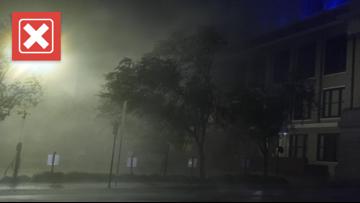Two of the 15 broods of periodical cicadas in the eastern and central U.S. are set to emerge in 2024. One is the Brood XIX, which appears primarily in the southern U.S. every 13 years, and the other is the Brood XIII, which appears primarily in Illinois and its surrounding states every 17 years. A cicada “brood” just refers to a group of cicadas that always emerge at the same time and can include multiple species of periodical cicada.
Numerous social media posts claim that 2024 will be the first time since 1803 that two groups of cicadas will emerge at the same time. Some of the posts have even referred to it as a “cicada apocalypse” because 1 trillion cicadas are expected to emerge at once.
THE QUESTION
Will 2024 be the first time since 1803 that two groups of cicadas emerge at once?
THE SOURCES
THE ANSWER
No, 2024 will not be the first time since 1803 that two groups of cicadas emerge at once.
WHAT WE FOUND
Two broods of cicadas emerge together every five or six years on average, though they typically don’t emerge in the same locations. This happened most recently in 2015.
It’s true that these two specific groups emerging in 2024 haven’t done so together since 1803, but a year in which two broods in general emerge in the same year is much more common. And while these broods will appear in neighboring areas, they won’t appear in exactly the same places.
The University of Connecticut Biodiversity Research Collections lists each of the 15 broods of periodical cicadas, their geographic range and the last four times each one emerged.
Two broods of cicadas emerged at once most recently in 2015, 2014, 2002, 2001, 1998 and 1985, according to the University of Connecticut.
“Generally, a 13-year brood emerges in the same year as a 17-year brood roughly every 5-6 years, though most of the 17-year broods are not in contact with a 13-year brood, so the different cicadas are clearly separated in space,” the University of Connecticut says.
There are three broods of 13-year cicadas and 12 broods of 17-year cicadas in existence worldwide, the Missouri Department of Conservation says. The mix of multiple 13-year and 17-year broods guarantees that two will emerge at the same time with some degree of regularity.
However, the two specific broods of cicadas that will emerge in 2024, the 13-year Brood XIX and the 17-year Brood XIII, have not emerged at the same time since 1803, according to the University of Illinois Urbana-Champaign Illinois Extension.
But there’s nothing particularly special about this specific pair of broods. The University of Illinois says the two broods won’t emerge in the same place; Brood XIII’s range is in the northern half of the state while Brood XIX’s range only extends to the southern half of the state.
“13-year Brood XIX and 17-year Brood XIII do not overlap to any significant extent. They may co-occur in patches of woods, but these patches will be small in size,” the University of Connecticut says. “Because the broods do not overlap to any significant extent, the 2024 co-emergence of Brood XIII and XIX will not involve areas of extreme or ‘double’ densities outside the norm of what happens in any other periodical cicada emergence year.”
In 1998, one brood of cicadas emerged in western Missouri and another emerged in much of the rest of the state, according to the Missouri Department of Conservation. The two broods appeared in neighboring areas with some overlapping territories.
“A co-emergence involving adjacent broods of different life cycles is something that happens only roughly every 25 years,” the University of Connecticut says. “Any two specific broods of different life cycles co-emerge only every 221 years.”
So while the specific pair of 2024 broods co-emerging at once is rare, it’s not rare for two broods in general to emerge together, and it’s not even all that rare for two neighboring broods to emerge at the same time. And there won’t be a “cicada apocalypse” anywhere in the United States.













